#1st century B.C
Photo
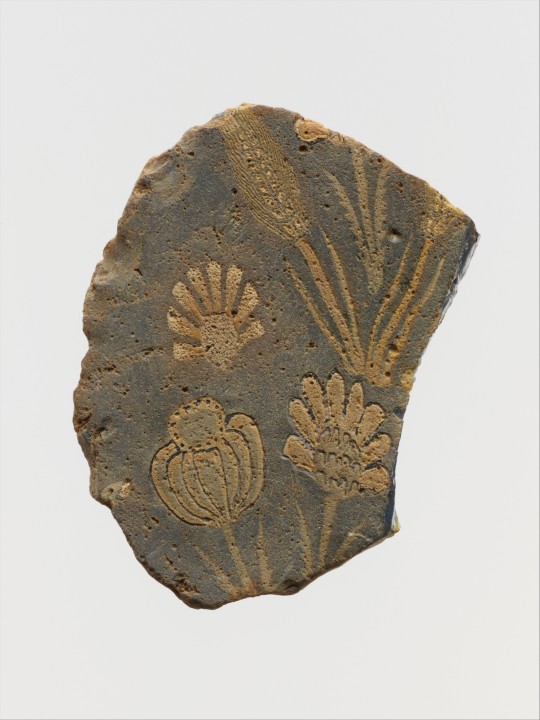
Glass mosaic plaque fragment with floral motifs (Roman, Egyptian late 1st century B.C.–1st century A.D).
Deep cobalt blue ground, appearing black; decoration in opaque white, yellow, and red, and other colours. Plants include a poppy seed head and an ear of wheat.
Glass, fused sections; cast.
Image and text information courtesy The Met.
1K notes
·
View notes
Text

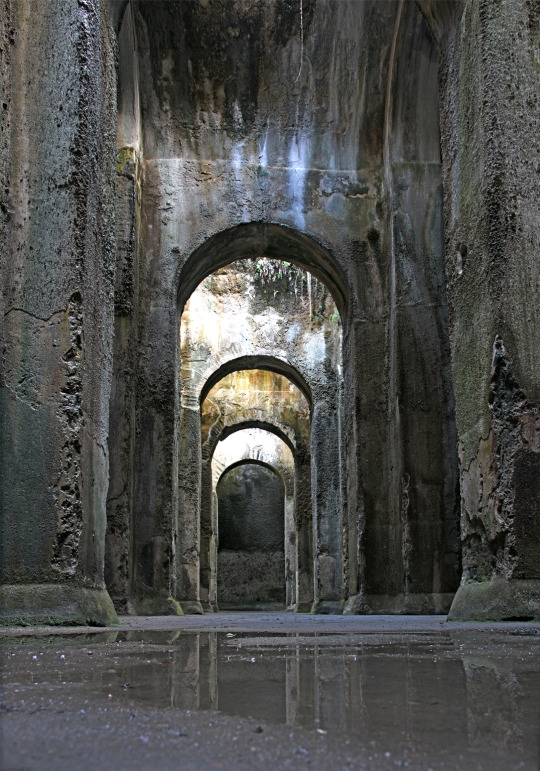

~ Piscina Mirabilis.
Date: Second half of 1st century B.C.
Place of origin: Naples, Piscina Mirabilis
(Napoli, Piscina Mirabilis)
#ancient#ancient art#history#museum#archeology#ancient history#archaeology#Piscina Mirabilis#naples#architecture#1st century B.C.
3K notes
·
View notes
Text



Roman Glass Bowl
1st century B.C.
The J. Paul Getty Museum.
#Roman Glass Bowl#1st century B.C.#glass#ancient glass#ancient artifacts#archeology#archeolgst#history#history news#ancient history#ancient culture#ancient civilizations#ancient rome#roman history#roman empire#roman art#blue
2K notes
·
View notes
Text

Wall painting on black ground - Aedicula with small landscape, from the imperial villa at Boscotrecase (1st century B.C.)
55 notes
·
View notes
Text
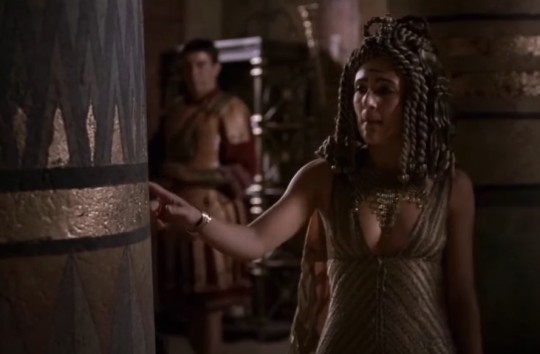
Lyndsey Marshal in Rome (2005–2007) Caesarion as Cleopatra
S1E8
Brutus gets a chilly reception from Servilia when he returns home from Greece. In Egypt, Caesar rebukes the advisers of the boy king, Ptolemy XIII, for their presumption in eliminating Pompey and demands the man who killed him. Caesar decides to intervene in the dispute between Ptolemy and his sister-wife, Cleopatra, to ensure both Rome's grain supply and his own access to Egypt's treasure. Antony, in an unusual show of prudence, advises against this with only half a legion in Alexandria and Cato and Scipio still at large in Africa. Caesar sends Vorenus and Pullo to rescue Cleopatra from house-arrest and escort her to Alexandria. Upon meeting Vorenus and Pullo, the narcissistic, opium-smoking teenage Cleopatra decides that her only hope of survival is to seduce Caesar and she compels Vorenus and Pullo to help smuggle her into the city first by unsuccessfully attempting to seduce Vorenus, but she has better luck with Pullo. Servilia's relationship with Octavia deepens beyond friendship into a passionate lesbian tryst. Caesar is besieged in Alexandra by the Egyptians loyal to Ptolemy. Back in Rome, Antony greets Brutus and Cicero on the floor of the deserted Senate and makes Cicero a promise to kill him if he ever turns against him.
*Julius Caesar was the first Roman to have his face put on a coin.
#Rome#2005#Lyndsey Marshal#Caesarion#S1E8#Cleopatra#tv series#action#drama#romance#period drama#roman era#Julius Caesar#rescue#1st century b.c.#beheadings#just watched
0 notes
Text

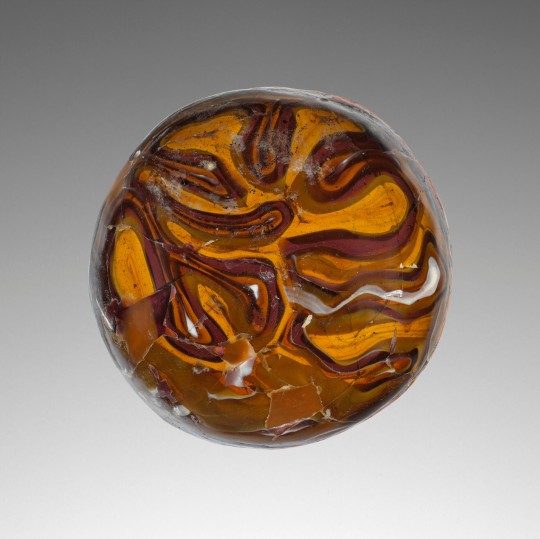


Roman glass bowl, end of 1st century B.C–1st century A.D
During the Roman Imperial period, the popularity of elite objects sculpted from colorful stones such as agate and onyx led to the development of a market in glass replicas. These affordable alternatives were cast or blown from multi-colored canes of glass and imitated expensive natural stones. Here, an ancient craftsman has created an abstract version of agate using brown and white glass.
To make the bowl, the artist heated a rod of multicolored glass and laid the molten glass onto a flat surface, spiraling it into the center in a serpentine pattern. While heating in a kiln, the glass would fuse slowly--each curve melding into the next--until it became one large, colorful disk. After brief cooling, the disk was placed atop a hemispherical mold and heated again, until it slumped into a bowl shape. In the final step, the completed bowl entered an annealing oven to cool slowly, a process that kept the glass from shattering.
Text by The J. Paul Getty Museum.
Public domain pictures. Getty's Open Content Program.
413 notes
·
View notes
Text

Gold earring with glass head pendant 3rd–1st century B.C. Phoenician or Carthaginian
2K notes
·
View notes
Text

Amethyst Intaglio Circa 1st Century, B.C. - A.D. Roman, Possibly Carved by Master Gem Carver, Dioscurides, Who Was The Favorite Gem Carver Of Emperor Augustus
Source: Archeology and The Ancient Worlds via Facebook/Meta
#amethyst#intaglio#ancient jewelry#precious gemstones#high jewelry#luxury jewelry#fine jewelry#fine jewellery pieces#dioscurides#emperor augustus
457 notes
·
View notes
Text

Marble statue of a wounded Amazon. Roman 1st–2nd century CE. x
In Greek art, the Amazons, a mythical race of warrior women from Asia Minor, were often depicted battling such heroes as Herakles, Achilles, and Theseus. This statue represents a refugee from battle who has lost her weapons and bleeds from a wound under her right breast. Her chiton is unfastened at one shoulder and belted at the waist with a makeshift bit of bridle from her horse. Despite her plight, her face shows no sign of pain or fatigue. She leans lightly on a pillar at her left and rests her right arm gracefully on her head in a gesture often used to denote sleep or death. Such emotional restraint was characteristic of classical art of the second half of the fifth century B.C.
The original statue probably stood in the precinct of the great temple of Artemis at Ephesos, on the coast of Asia Minor, where the Amazons had legendary and cultic connections with the goddess. The Roman writer Pliny the Elder described a competition held in the mid-fifth century B.C. between five famous sculptors, including Phidias, Polykleitos, and Kresilas, who were to make a statue of an Amazon for the temple. This type of statue is generally associated with that contest.
430 notes
·
View notes
Photo



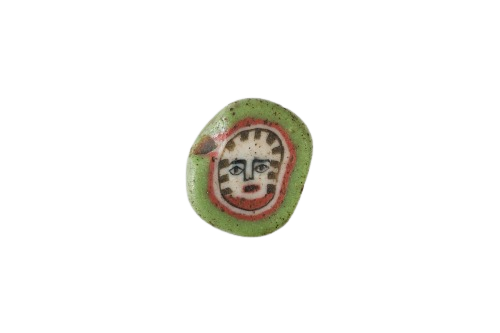
Glass mosaic face beads from 1st century B.C.–1st century A.D. PNGs
4K notes
·
View notes
Text
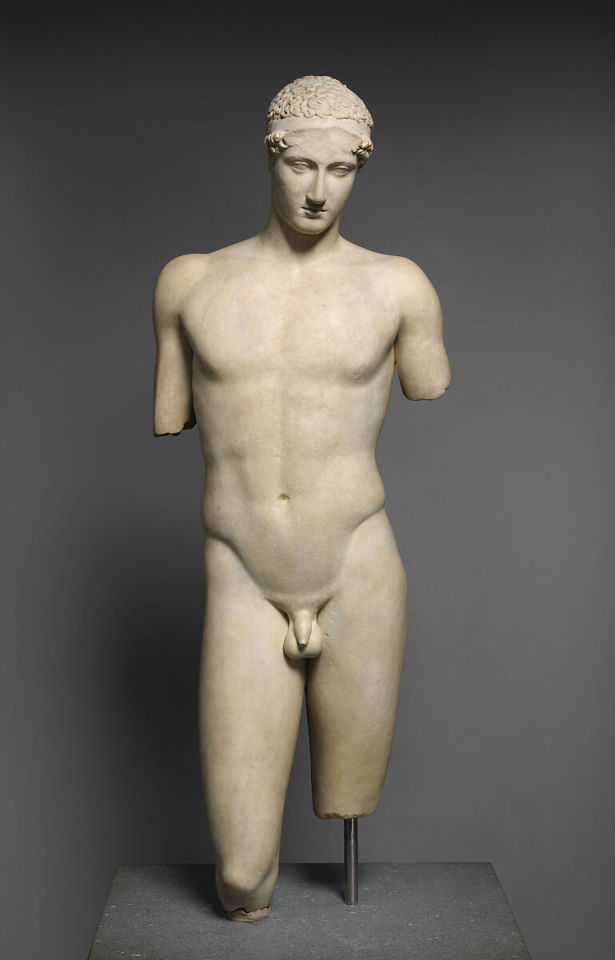

Stephanos Athlete, Roman, Early Imperial, Date late 1st century B.C. or 1st century A.D
#stephanos athlete#ancient art#ancient sculpture#marble sculpture#art history#roman art#roman history
211 notes
·
View notes
Photo


Sardonyx cameo with Cupid crowning Venus, in a gold mount with an openwork enamel frame
Roman, 1st century B.C. (cameo); French, c. 1660 (frame)
Royal Collection Trust
#Happy Valentine's Day!#Cupid#Venus#heart#Ancient Rome#cameo#sardonyx#gold#openwork#enamel#French#flowers#tulips#fritillaries#roses#Royal Collection Trust#ancient art#Roman art#sculpture
666 notes
·
View notes
Text

臥馬紋銀帶飾
~ Belt Plaque in the Shape of a Crouching Horse.
Date: 3rd–1st century B.C.
Culture: North China
Medium: Silver
#ancient#ancient art#history#museum#archeology#ancient history#archaeology#belt plaque#crouching horse#horse#china#chinese#asian#asian art#3rd century B.C.#1st century B.C.
646 notes
·
View notes
Text
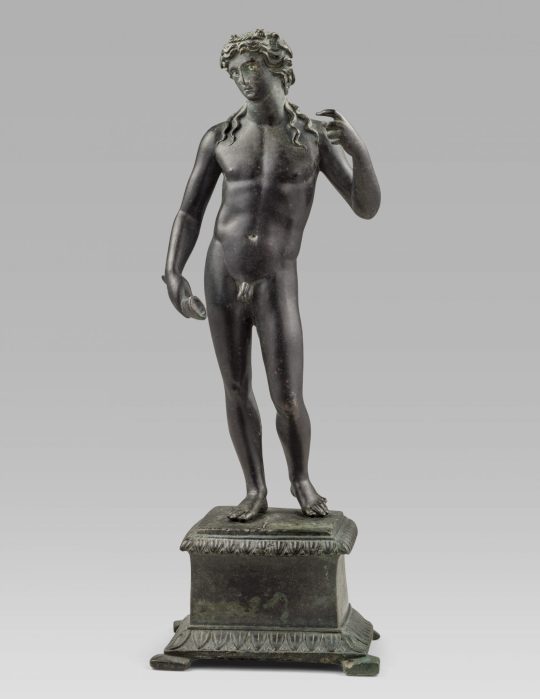

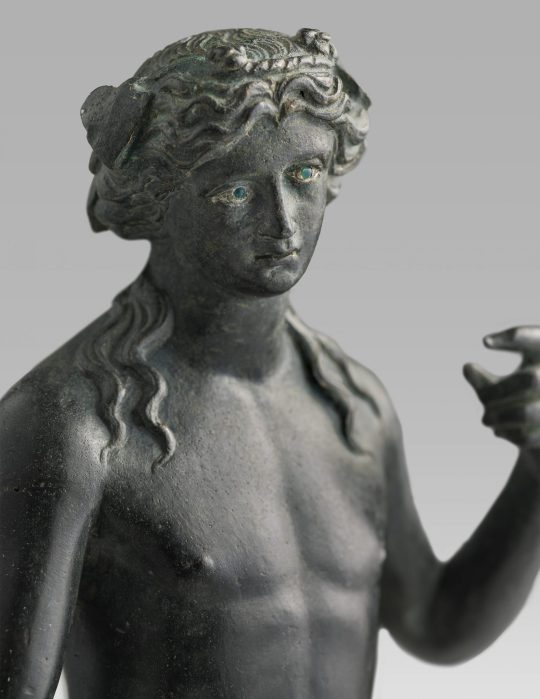

Graeco Roman Bronze Statuette of Dionysus
1st century B.C. - 1st century A.D.
#Graeco Roman Bronze Statuette of Dionysus#1st century B.C. - 1st century A.D.#bronze#bronze statue#ancient bronze#ancient artifacts#archeology#archeolgst#history#history news#ancient history#ancient culture#ancient civilizations#roman history#roman empire#greek history#roman art#greek art
206 notes
·
View notes
Text

Belt clasp
Caucasus, ca. 1st–2nd century CE
In the late second millennium B.C., the tradition of lively animal-ornamented bronzes begins in the Caucasus region. Stylized animals with small waists, arched necks and backs are seen on numerous bronze tools including axes and pins, and are found in Georgia, Armenia, Azerbaijan, and the Northern Caucasus by the beginning of the Late Bronze and Early Iron ages.
140 notes
·
View notes
Text

Statuette of Eros as Harpokrates carrying a cornucopia
the Diphilos' workshop
Greek, East Greek
Hellenistic or Imperial Period
late 1st century B.C. – early 1st century A.D.
#esoteric#consciousness#metaphysical#occult#rosicrucian#tarot#alchemy#magic#alchemist#art#magick#magical
180 notes
·
View notes